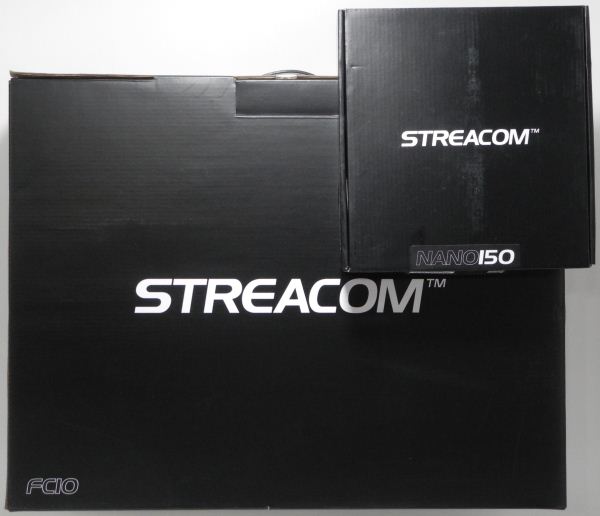Streacom's FC10 and Nano150: Building a Fanless Ivy Bridge HTPC
by Ganesh T S on December 22, 2012 3:30 AM EST- Posted in
- HTPC
- Fanless
- Ivy Bridge
Introduction
HTPC enthusiasts often place a lot of emphasis on silent systems for obvious reasons. We have looked at systems with passive thermal solutions before, but never presented the build process for one. Back in May, we had covered Streacom's announcement of the fanless FC9 and FC10 chassis. With support for passive cooling of CPUs with a TDP of up to 95 W and a sleek industrial design, HTPC enthusiasts have been eagerly waiting for these units to hit the market. After some delays, Streacom finalized the design and started shipping the units to resellers in mid-November. We requested for samples of the FC10 chassis and the Nano150 PSU and Streacom's shipment reached us in the first week of December.
Dustin usually handles case reviews and Martin handles PSUs, but, with the Streacom components, we are going to take a different long term approach. We will be using the FC10 and the Nano150 as building blocks for a fully passive HTPC. We also intend the HTPC to act as a testbed for evaluating discrete HTPC GPUs.
The Streacom offerings introduced in May also included the FC9 which supports mITX and uATX motherboards. However, the FC9 supports half-height PCIe cards only. The FC10, on the other hand, supports up to two full height PCIe cards. Hence, we took the decision to go in for the FC10 despite our plans to use a mITX motherboard.
In today's piece, we will first check out the Streacom components in detail. Following that, we will take a brief look at the other components of our passive HTPC build. After that, we will go through the build process in detail and also present some thermal performance results. In the concluding section, we will have a sneak peek at what lies in store in the remaining parts of the HTPC series.











63 Comments
View All Comments
colonelciller - Sunday, December 23, 2012 - link
Does the i3-3225 support 23.976 playback?Aikouka - Sunday, December 23, 2012 - link
Last I recall, Intel's drivers do have a "24 FPS" setting, but it is not true 23.976. However, my information may be out of date!casteve - Saturday, December 22, 2012 - link
Thanks for the review, but what are the units of time in the graphs? seconds, minutes, mayan long count?ganeshts - Saturday, December 22, 2012 - link
Apologize for the oversight. The time unit is in (s). The first graph is not very clear (I had actually let our power logger script run for 100 minutes = 6000s). For the loading temperature graphs, I had indicated in the text that the burn-in testing was run for 12 hours (=43200s).kyuu - Saturday, December 22, 2012 - link
First paragraph on page 3:"There was a toss up between building a Trinity-based testbed and a Ivy Bridge-based testbed. In the end, the fact that Trinity emerged as being a capable madVR candidate (with software based decoding), and the fact that madVR recently introduced DXVA scaling (an upside for Intel since its offerings weren't fully madVR capable earlier, and something that we wanted to test out) persuaded us to go for an Intel-based testbed."
Am I missing something or is this messed up? You describe (what I assume are) positive aspects of Trinity, then use that as the justification for using Ivy Bridge? Huh?
ElvenLemming - Saturday, December 22, 2012 - link
The way I interpreted that was that because the madVR support is newer and less-tested for Intel, they decided to go with an Intel build here so they could use the same machine for future madVR testing.The paragraph wasn't worded very clearly, but that's what I got out of it.
ganeshts - Saturday, December 22, 2012 - link
Yes, I could have conveyed that in a better manner, but ElvenLemming's interpretation is right. In our Trinity and Ivy Bridge reviews, we found that 720p60 H.264 streams gave trouble to HD 4000. Recently, madVR introducied DXVA scaling, and I have it from very reliable sources that Mathias (madVR developer) is working closely with Intel. So, we wanted to have the right platform to evaluate these developments.kyuu - Sunday, December 23, 2012 - link
Ah got it. Thanks for the clarification.Schafdog - Saturday, December 22, 2012 - link
What's the idle power of the system?ganeshts - Saturday, December 22, 2012 - link
That is coming in Part 2 of the review :) As a sneak peek, I can say it is around 28 W. Power measurement during Blu-ray playback and other workloads will be dealt with in detail in the next series installment.